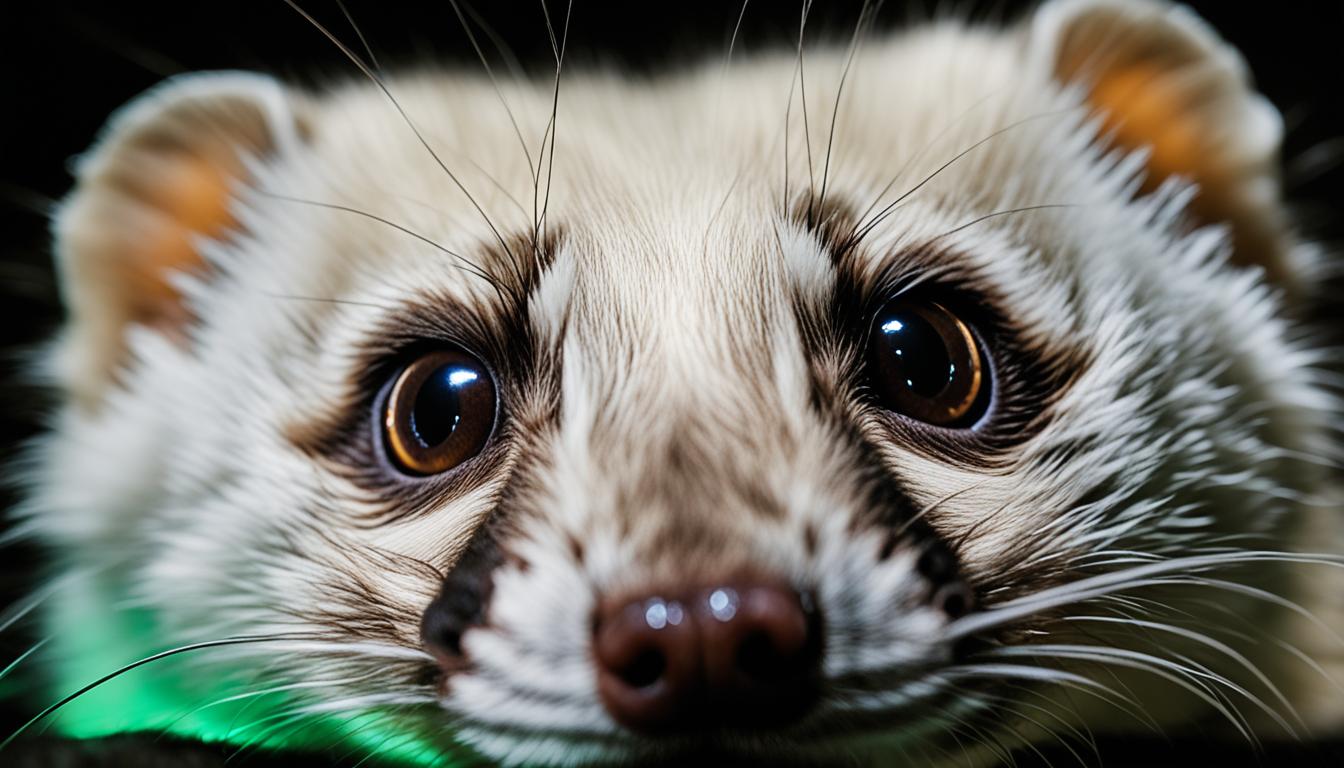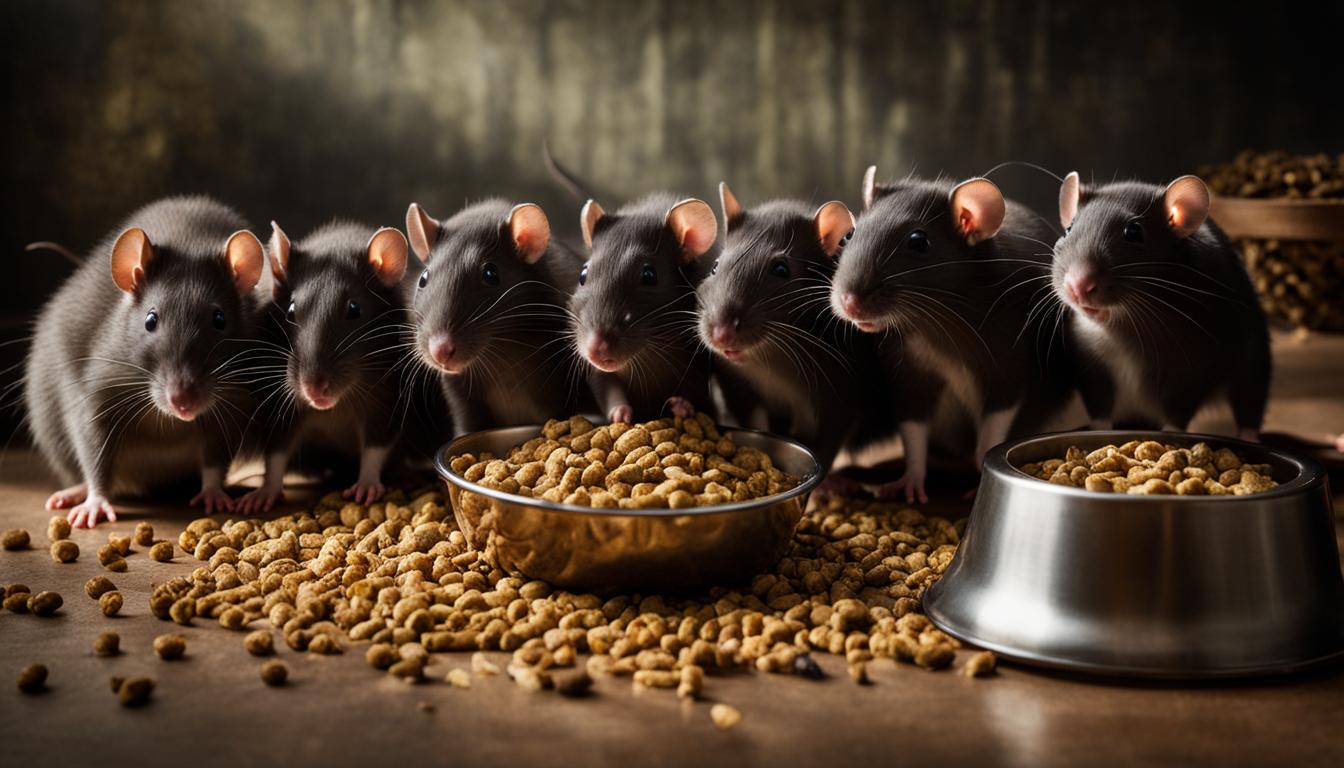Did you know that China has over 100 different types of animals, including the famous giant panda, golden-haired monkey, South China tiger, and red-crowned crane? Explore the diverse wildlife in China and discover some amazing creatures you may not have known exist!
China’s vast regions, diverse terrain, and climate variations have led to a rich variety of flora and fauna in the country. With nearly 500 animal species, 1,189 bird species, and over 500 reptile and amphibian species, China boasts an impressive biodiversity. Conservation efforts, such as the establishment of the China Wildlife Conservation Association and the Wildlife Protection Law, have helped preserve these unique and rare species.
Key Takeaways:
- China is home to over 100 species of wildlife, including the giant panda and South China tiger.
- The country’s diverse terrain and climate variations have contributed to its rich biodiversity.
- Conservation efforts, such as the establishment of the China Wildlife Conservation Association, have played a crucial role in preserving China’s unique animal species.
- China has nearly 500 animal species, 1,189 bird species, and over 500 reptile and amphibian species.
- Exploring China’s diverse wildlife offers a unique and unforgettable experience for nature enthusiasts.
Habitats in China
China is blessed with a diverse range of habitats and landscapes, making it a haven for wildlife. From dense forests to vast grasslands, the country’s ecosystems are rich and varied, offering a home to a wide array of animal species. Let’s explore some of the fascinating habitats found in China:
Forests
The forests of China are teeming with life and encompass a range of types, including boreal, deciduous, coniferous, mixed, and tropical forests. These lush green havens provide shelter and food for numerous animal species, fostering a thriving ecosystem. The diverse flora and fauna found within these forests contribute to the biodiversity of China.
Grasslands
The rolling grasslands, also known as steppes, stretch across vast areas of China. These expansive plains support a unique blend of wildlife and provide crucial grazing grounds for numerous herbivores. The grasslands are also home to a variety of avian species, such as the iconic black-necked crane, creating a spectacle for birdwatchers.
Deserts
China’s deserts, such as the Gobi Desert, are harsh and unforgiving, yet they harbor their own remarkable ecosystem. Known for their stunning sand dunes and extreme temperatures, these arid landscapes are home to desert-dwelling animals and plants that have adapted to survive in this challenging environment.
Mangroves
The mangroves along China’s coast are a vital habitat for numerous species. These unique coastal forests provide a protective home for diverse marine life, including fish, crabs, and migratory birds. The intricate root systems of the mangroves also serve as a natural barrier, protecting coastal regions from erosion and storm surges.
Mountainous Regions
China’s mountainous regions, such as the Himalayas and the Tibetan Plateau, offer a dramatic contrast to the country’s low-lying areas. These towering peaks create distinct microclimates and host a range of habitats, from high-altitude grasslands to alpine meadows and snow-capped peaks. The mountainous regions of China are home to unique and endangered species, including the elusive snow leopard.
China’s landscapes are a testament to the country’s incredible biodiversity. With a variety of habitats, ranging from lush forests to arid deserts, there is a wealth of unique ecosystems to explore in this vast country. These diverse habitats provide essential resources for wildlife and contribute to the preservation of China’s rich biological tapestry.
Endangered Species in China
China is home to several endangered species, including the giant panda, South China tiger, and Chinese alligator. These iconic animals are not only important symbols of China’s wildlife heritage but also key indicators of the health of their respective habitats. To ensure their survival, wildlife conservation efforts in China have gained international support.
The establishment of wildlife reserves and national forest areas has provided protected spaces for endangered species to thrive. Additionally, extensive awareness campaigns and research studies have furthered our understanding of their unique needs and behaviors. As a result, there have been encouraging signs of population growth for certain species.
For instance, the golden monkey, takin, eld’s deer, and Chinese alligator are among the endangered species in China that have shown promising population recoveries, thanks to dedicated conservation efforts. These positive outcomes highlight the effectiveness of wildlife conservation strategies implemented in the country.
“China’s commitment to protecting endangered species is commendable. By creating protected areas, raising awareness, and conducting vital research, they are making a positive impact on biodiversity conservation.”
However, the work is far from over. The continued protection and conservation of these endangered species require sustained efforts and global collaboration. By safeguarding these animals and their habitats, China is not only preserving its natural heritage but also contributing to global biodiversity conservation.
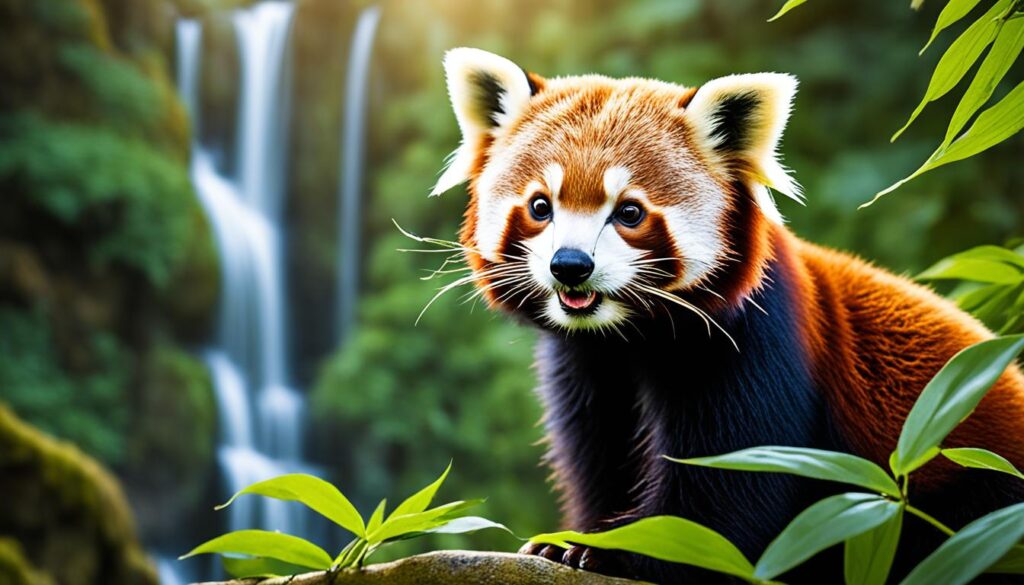
| Endangered Species | Scientific Name | Status |
|---|---|---|
| Giant Panda | Ailuropoda melanoleuca | Endangered |
| South China Tiger | Panthera tigris amoyensis | Critically Endangered |
| Chinese Alligator | Alligator sinensis | Critically Endangered |
Notable Wildlife in China
China boasts a remarkable array of notable wildlife species, with a diverse range of animals that are unique to the country. In addition to the well-known giant panda, golden haired monkey, and South China tiger, there are several other fascinating wildlife species that call China their home. Let’s explore some of these remarkable creatures that contribute to the wildlife diversity in China.
Red-crowned Crane
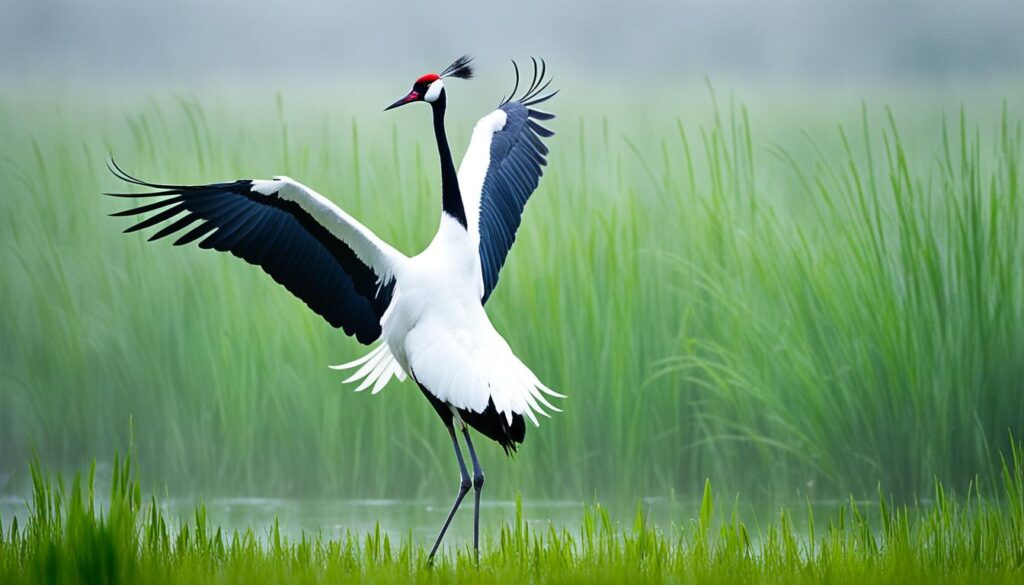
“The red-crowned crane is a majestic bird that is considered a symbol of luck and longevity in China. With its striking red crown and graceful appearance, these beautiful cranes are a sight to behold. They can be found in the wetlands and marshes of northeastern China, where they perform an elegant dance during courtship.”
Unique Primate Species
China is home to 18 species of primates that cannot be found in other countries of the same latitude. These remarkable creatures add to the country’s wildlife diversity and are a testament to China’s unique ecosystems. Among the notable primate species in China are the Hainan gibbon, Yunnan snub-nosed monkey, and golden snub-nosed monkey.
Crane Species
China is also home to a significant number of crane species. In fact, nine out of the fifteen known crane species in the world can be found in China. These elegant birds, with their impressive wingspan and graceful movements, have captured the imagination of wildlife enthusiasts worldwide. Species such as the Hooded crane, White-naped crane, and Black-necked crane thrive in China’s wetland habitats.
| Notable Wildlife Species | Location | Description |
|---|---|---|
| Giant Panda | Mountainous regions of central and southwestern China | The giant panda is a beloved symbol of China and an iconic global conservation species. It is known for its distinctive black and white fur and bamboo diet. |
| Golden Haired Monkey | Mountainous forests in southwestern China | The golden haired monkey, also known as the golden snub-nosed monkey, is a unique primate species with golden fur and a striking appearance. |
| South China Tiger | Historically found in southern China | The South China tiger is one of the most endangered tiger species in the world. Efforts are underway to protect and revive its population. |
Wildlife Tourism in China
Wildlife tourism in China has gained significant popularity in recent years, attracting nature enthusiasts and adventure seekers from around the world. With its diverse flora and fauna, China offers a unique opportunity to explore and appreciate its incredible wildlife.
Wildlife tours in China provide an immersive experience, allowing visitors to witness the country’s rich biodiversity up close. From the enchanting giant pandas in their natural habitat to the elusive South China tiger, there are numerous awe-inspiring wildlife encounters awaiting travelers.
One of the highlights of wildlife tours in China is the chance to observe a variety of bird species, reptiles, and amphibians. Whether it’s the graceful flight of the red-crowned crane or the fascinating colors of the Chinese alligator, exploring Chinese wildlife offers a captivating experience for nature lovers.
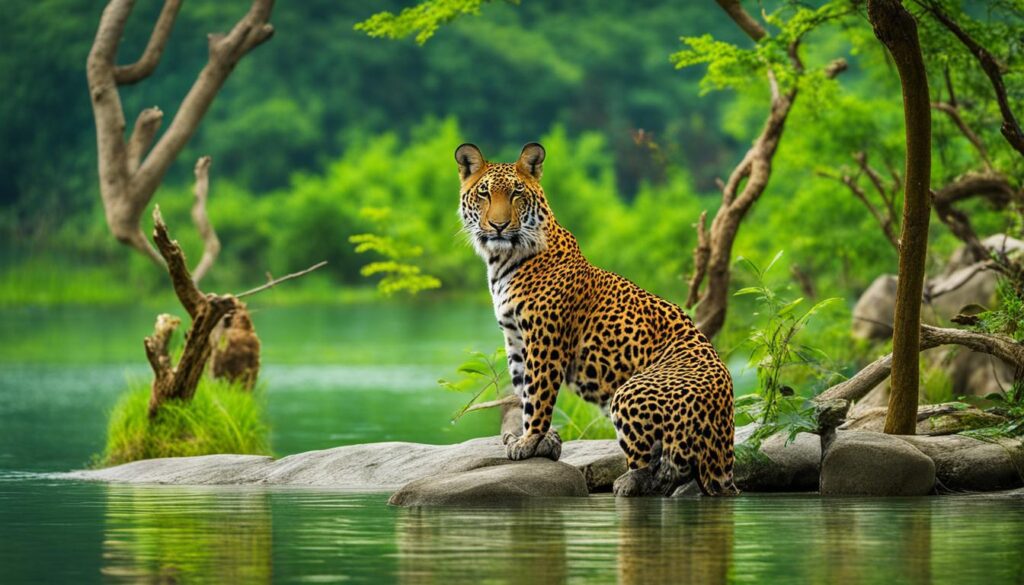
Benefits of Wildlife Tourism in China
1. Conservation: Wildlife tourism plays a crucial role in supporting conservation efforts in China. By raising awareness and generating income through responsible tourism, it helps fund wildlife protection initiatives and habitat preservation.
2. Education and Research: Wildlife tours provide opportunities for educational experiences and scientific research. Visitors can learn about the importance of biodiversity conservation and contribute to the collection of valuable data for ongoing studies.
3. Sustainable Development: Well-managed wildlife tourism promotes sustainable development by integrating conservation practices with local communities. It can generate income and employment opportunities while ensuring the long-term protection of natural resources.
4. Cultural Exchange: Wildlife tours in China often involve interactions with local communities, offering a chance to learn about traditional customs and practices. This cultural exchange promotes mutual understanding and appreciation.
“Exploring wildlife in China allows visitors to witness the wonders of nature and fosters a deep appreciation for the need to protect and conserve these magnificent species.”
Recommended Wildlife Tours in China
When planning a wildlife tour in China, consider the following options:
| Tour Name | Highlights | Duration |
|---|---|---|
| Giant Panda Encounter | Get up close with adorable giant pandas and learn about conservation efforts. | 3 days |
| Tigers of China | Embark on a quest to spot the elusive South China tiger in its natural habitat. | 5 days |
| Birdwatching Extravaganza | Discover the diverse avian species of China, including the iconic red-crowned crane. | 7 days |
| Reptiles and Amphibians Expedition | Explore unique habitats to observe fascinating reptiles and amphibians like never before. | 10 days |
Embarking on a wildlife tour in China promises an unforgettable adventure, providing a deeper understanding and appreciation for the country’s extraordinary biodiversity.
Conservation Efforts in China
China has demonstrated a significant commitment to wildlife conservation, recognizing the importance of preserving its diverse ecosystems and unique species. One of the key organizations driving these efforts is the China Wildlife Conservation Association (CWCA), established in 1983. Through its initiatives and partnerships, the CWCA plays a vital role in promoting wildlife conservation and raising public awareness.
Moreover, the Chinese government has established conservation policies to further protect the country’s wildlife. The Wildlife Protection Law, passed by the government, serves as a foundation for these policies. It sets guidelines and regulations for the protection and management of wildlife and their habitats.
By the end of 1995, China had established over 574 forest or wildlife reserves, covering 8.7% of the national territory. These reserves serve as protected areas for a wide range of species, safeguarding their habitats and supporting their population growth. The establishment of these reserves illustrates China’s commitment to preserving its precious wildlife and biodiversity.
China’s conservation efforts have been instrumental in safeguarding the nation’s unique and endangered species. Through the establishment of reserves and the implementation of conservation policies, China continues to make significant strides in preserving its rich wildlife heritage.
To provide a deeper understanding of the extent of China’s conservation efforts, the following table highlights key milestones:
| Date | Conservation Milestone |
|---|---|
| 1983 | Establishment of the China Wildlife Conservation Association |
| _____ | Passage of the Wildlife Protection Law |
| 1995 | Establishment of over 574 forest or wildlife reserves |
| 2021 | Ongoing efforts in conservation and sustainable practices |

China’s dedication to wildlife conservation is commendable, as it not only protects its endemic species but also contributes to the global efforts in biodiversity preservation. These conservation measures play a crucial role in maintaining the delicate balance of ecosystems, promoting sustainable development, and nurturing a harmonious coexistence between humans and wildlife.
Unique Bird Species in China
China is a haven for bird enthusiasts, boasting a remarkable diversity of avian species. With over 1,189 bird species, including several endemic and rare species, China offers a wealth of birdwatching opportunities. Birdwatching enthusiasts can enjoy observing these beautiful creatures in their natural habitats across the country. Some of the notable bird species found in China include:
- Red-crowned crane
- Black-necked crane
- Black-headed gull
These birds showcase the stunning avian diversity in China, captivating birdwatchers with their unique characteristics and behaviors. The red-crowned crane, with its graceful appearance and elegant mating dance, is considered a symbol of luck and longevity in Chinese culture. The black-necked crane, found in the high-altitude regions of China, is known for its striking black and white plumage. The black-headed gull, on the other hand, is a migratory bird that can be observed in various wetland habitats throughout China.
To give you a glimpse of the beautiful red-crowned crane, here is an image of this majestic bird:
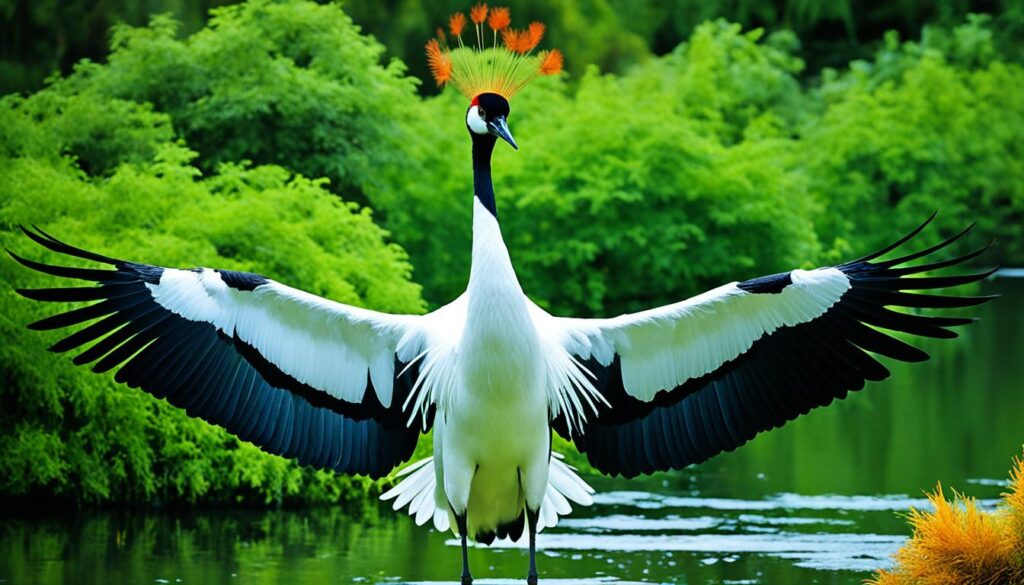
Seeing these unique bird species in their natural habitats is a truly captivating experience and a must-do for any bird lover visiting China.
Iconic Mammals in China
China is renowned for its iconic mammal species that have captivated the world with their unique characteristics and beauty. Among the famous wildlife species in China, three mammals stand out as symbols of the country’s rich wildlife heritage: the giant panda, golden haired monkey, and South China tiger.
The giant panda is perhaps the most well-known of all Chinese mammals. With its distinctive black and white fur, this gentle creature has become a global conservation icon and a beloved symbol of China. The giant panda’s endearing appearance and captivating behavior have made it a cherished species around the world.
The golden haired monkey, also known as the snub-nosed monkey, is another iconic mammal that inhabits the mountains of China. Known for its striking golden fur and unique ability to survive in cold climates, this monkey is a testament to the adaptability and resilience of China’s wildlife.
The South China tiger, considered one of the most endangered big cat species in the world, holds a special place in China’s wildlife conservation efforts. With its majestic presence and beautiful markings, the South China tiger represents the importance of protecting and preserving endangered species for future generations.
Visiting China offers wildlife enthusiasts the incredible opportunity to witness these iconic mammals in their natural habitats. Whether observing the giant pandas in the dense bamboo forests or catching a glimpse of the golden haired monkeys leaping through the treetops, encountering these magnificent creatures is an unforgettable experience.
With China’s commitment to wildlife conservation and the establishment of protected areas, there is hope for the continued survival of these iconic mammals and other famous wildlife species in China. Through responsible tourism and ongoing conservation efforts, we can contribute to the preservation of China’s rich biodiversity and ensure a future where these incredible creatures continue to enchant and inspire.
Reptiles and Amphibians in China
China is renowned for its diverse wildlife, and its reptiles and amphibians are no exception. With over 500 species, the country boasts a remarkable array of these fascinating creatures. From the agile reptiles to the resilient amphibians, they play a vital role in China’s ecosystems.
One notable reptile found in China is the iconic Chinese alligator. With its unique appearance and status as a critically endangered species, it serves as a symbol of conservation efforts in the country. Another remarkable reptile is the Chinese water dragon, known for its striking colors and ability to adapt to various habitats.
China is also home to several endangered and endemic amphibian species, including the Chinese giant salamander. As one of the largest amphibians in the world, it stands as a testament to China’s rich biodiversity. Unfortunately, habitat loss and illegal trade pose significant threats to its survival.
The diverse habitats of China provide ideal conditions for the survival and reproduction of reptiles and amphibians. From the lush forests to the pristine wetlands, these creatures have adapted to thrive in their respective environments. The abundance of water bodies, such as lakes, rivers, and ponds, creates breeding grounds and sustains their populations.
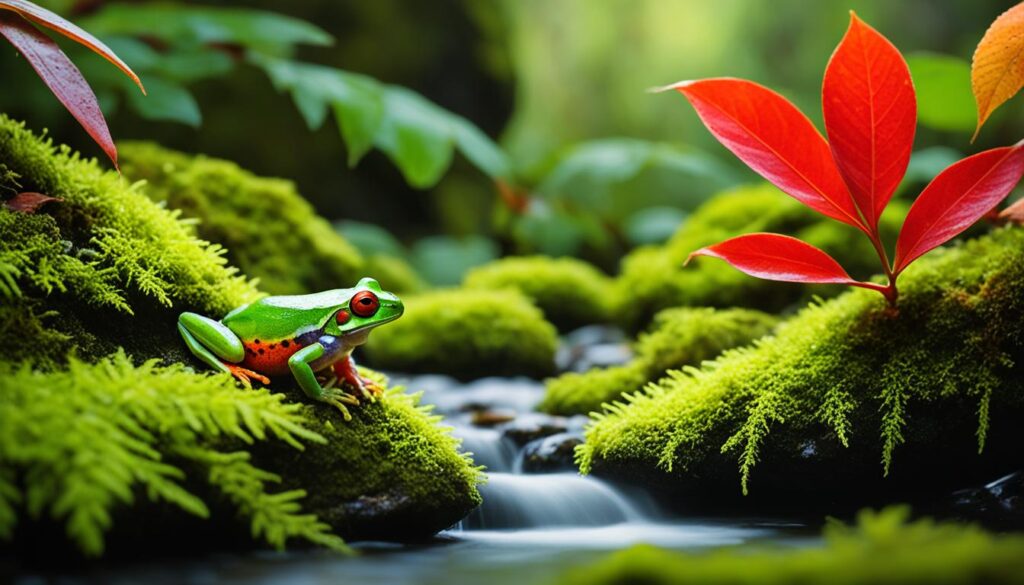
Table: Diversity of Reptiles and Amphibians in China
| Group | Number of Species |
|---|---|
| Reptiles | 365 |
| Amphibians | 178 |
Source: China Wildlife Conservation Association
Wildlife Conservation Organizations in China
When it comes to wildlife conservation in China, several organizations are at the forefront of protecting and preserving the country’s unique and diverse species. One of the leading organizations in this field is the China Wildlife Conservation Association (CWCA). Established in 1983, the CWCA focuses on implementing conservation initiatives to safeguard China’s wildlife and their habitats.
In addition to the CWCA, there are numerous conservation non-governmental organizations (NGOs) and research institutes dedicated to the cause of wildlife conservation in China. These organizations collaborate with government agencies, local communities, and international partners to promote sustainable practices and raise awareness about the importance of preserving China’s biodiversity.
The efforts of these wildlife conservation organizations in China are multifaceted. They conduct extensive research on endangered species, monitor wildlife populations, and develop conservation strategies and action plans. By working closely with local communities and stakeholders, they also promote community-based conservation initiatives and create sustainable livelihood opportunities that reduce reliance on activities harmful to wildlife.
Furthermore, these organizations play a significant role in raising public awareness through education and outreach programs. They organize workshops, seminars, and awareness campaigns to inform people about the importance of wildlife conservation, the threats faced by endangered species, and the actions individuals can take to contribute to conservation efforts.
One of the key aspects of wildlife conservation in China is the collaboration between government agencies, such as the CWCA, and NGOs. This collaboration enables the sharing of resources, expertise, and best practices, leading to more effective conservation outcomes. By combining their efforts, these organizations strive to address the challenges posed by habitat destruction, pollution, climate change, and illegal wildlife trade.
Below is a table highlighting some of the notable wildlife conservation organizations in China:
| Organization | Mission |
|---|---|
| China Wildlife Conservation Association (CWCA) | Focused on the protection and preservation of China’s unique wildlife species through research, awareness campaigns, and conservation initiatives. |
| Wildlife Conservation Society (WCS) China | Works towards conserving China’s wildlife and their habitats through research, community engagement, and capacity building. |
| WildAid China | Addresses the demand for illegal wildlife products through public awareness campaigns and advocacy efforts. |
| Nature Conservancy China | Focuses on sustainable land and water management, protecting critical habitats, and promoting community-based conservation. |
| Shanshui Conservation Center | Works to protect China’s natural ecosystems and wildlife through research, conservation planning, and grassroots engagement. |
These organizations, along with countless others, are instrumental in safeguarding China’s wildlife and preserving its rich biodiversity. Their dedication, combined with the collective efforts of individuals and communities, is vital for ensuring a sustainable future where both humans and wildlife can thrive.

The Importance of Wildlife Conservation in China
Wildlife conservation plays a vital role in preserving the rich biodiversity of China, contributing to the balance of ecosystems and the overall health of the planet. China’s unique and endangered species, such as the giant panda and South China tiger, serve as important indicators of the health of their respective habitats.
By protecting these species, we are not only safeguarding their existence but also ensuring the conservation of the habitats they rely on. This, in turn, helps maintain the delicate balance of the ecosystems they inhabit, supporting other plant and animal species that depend on these habitats for survival.
Beyond the intrinsic value of preserving China’s wildlife, biodiversity conservation also has significant ecological and economic benefits. Healthy ecosystems provide essential services such as water filtration, climate regulation, and the pollination of crops. By preserving these ecosystems, we are safeguarding the well-being and livelihoods of future generations.
“The protection of endangered species and their habitats is a shared responsibility that requires global collaboration. China’s commitment to wildlife conservation is crucial for the preservation of our planet’s incredible natural heritage.”
To illustrate the importance of wildlife conservation in China, let’s take a closer look at the iconic giant panda. This beloved species, once on the brink of extinction, has become a symbol of successful conservation efforts. By protecting the giant panda’s habitat, implementing conservation measures, and raising public awareness, China has successfully brought this species back from the brink, demonstrating the positive impact of conservation initiatives.
Overall, wildlife conservation in China is not only about protecting individual species but also about preserving the intricate web of life that exists within its borders. It is a collective effort that requires collaboration between government agencies, conservation organizations, scientists, local communities, and individuals. Through our collective efforts, we can ensure the long-term survival of China’s wildlife and the invaluable ecosystems they inhabit.

| Benefits of Wildlife Conservation | Importance |
|---|---|
| Preservation of Biodiversity | Biodiversity is essential for maintaining ecological balance and supporting sustainable ecosystems. |
| Ecosystem Services | Conserved ecosystems provide crucial services such as water filtration, climate regulation, and pollination. |
| Economic Value | Ecotourism and sustainable wildlife practices generate revenue while preserving natural resources. |
| Indigenous Cultures | Conserving wildlife preserves the cultural heritage of indigenous communities connected to natural resources. |
| Education and Research | Protected habitats offer opportunities for scientific research and contribute to environmental education. |
Ecotourism and Sustainable Wildlife Practices in China
With the rise of ecotourism, there has been a growing emphasis on sustainable wildlife practices in China. Ecotourism initiatives promote responsible travel that minimizes the negative impact on the environment and local communities. By supporting ecotourism initiatives, travelers can contribute to the conservation of China’s wildlife while enjoying immersive and educational experiences. It is crucial to choose tour operators and accommodations that prioritize sustainability and respect for the natural habitats and wildlife of China.
Responsible Travel for Wildlife Conservation
When engaging in ecotourism activities in China, responsible travel practices play a vital role in ensuring the protection and preservation of wildlife. Travelers can make a positive impact by following these sustainable guidelines:
- Respect wildlife habitats and ecosystems, maintaining a safe distance from animals to minimize disturbance.
- Avoid purchasing products derived from endangered species, such as souvenirs made from ivory.
- Support local conservation organizations and initiatives through donations or volunteering.
- Choose tour operators that prioritize ethical wildlife encounters and adhere to responsible guidelines.
- Stay informed about local wildlife conservation practices and regulations to ensure compliance during your travels.
The Benefits of Ecotourism in China
Ecotourism not only contributes to the preservation of China’s wildlife but also brings several benefits to both the environment and local communities:
- Conservation Funding: Revenue generated from ecotourism activities can be reinvested into conservation efforts, including habitat protection, anti-poaching measures, and wildlife research.
- Community Development: Ecotourism creates opportunities for local communities to participate in sustainable economic activities such as guiding tours, providing accommodations, and selling locally sourced products.
- Environmental Education: Through guided tours and educational programs, ecotourism offers visitors the chance to learn about China’s unique wildlife, fostering awareness and understanding of the importance of conservation.
- Social and Cultural Exchange: Ecotourism encourages cultural appreciation and cross-cultural interaction, promoting mutual understanding and respect between travelers and local communities.
| Benefits of Ecotourism | Description |
|---|---|
| Funding for Conservation | Revenue generated from ecotourism activities can support wildlife conservation efforts, such as habitat protection and anti-poaching measures. |
| Community Development | Ecotourism provides opportunities for local communities to participate in sustainable economic activities and improve their livelihoods. |
| Environmental Education | Through guided tours and educational programs, ecotourism enhances visitors’ understanding of China’s wildlife and the importance of conservation. |
| Social and Cultural Exchange | Ecotourism encourages cultural appreciation and cross-cultural interaction, fostering mutual understanding and respect. |
By embracing ecotourism and practicing responsible travel, visitors to China can make a positive difference in wildlife conservation while experiencing the beauty and wonder of the country’s diverse flora and fauna.
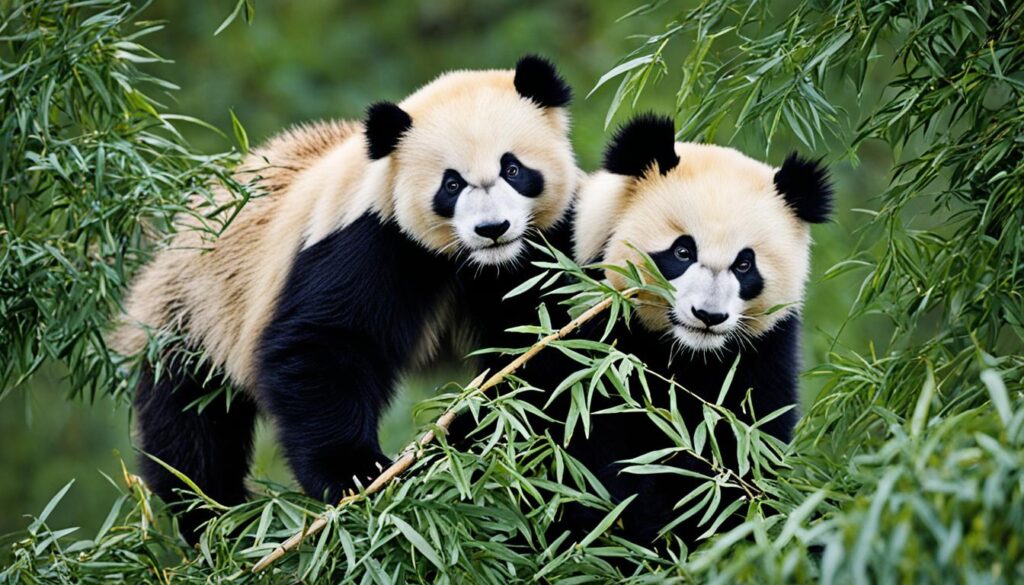
Future Challenges and Opportunities for Wildlife in China
Despite the progress made in wildlife conservation, China still faces various challenges in protecting its biodiversity. Habitat loss, climate change, poaching, and illegal wildlife trade are among the threats that need to be addressed.
“The conservation of wildlife and nature is not a one-time effort, but a continuous endeavor that requires active participation and collaboration.”
However, amidst these challenges, there are also opportunities for further conservation efforts in China. By integrating sustainable practices in various sectors, increasing public awareness, and fostering international collaborations, China can continue to safeguard its diverse wildlife for future generations.
Conservation Opportunities in China:
- Integration of sustainable practices in industries such as agriculture, forestry, and tourism, ensuring ecological balance.
- Initiatives to restore and protect critical habitats, such as reforestation and wetland conservation.
- Strengthening enforcement against poaching and illegal wildlife trade through stricter laws and penalties.
- Education and awareness campaigns to engage the public in conservation efforts and promote responsible behavior towards wildlife.
- International collaborations and knowledge sharing to benefit from global expertise and resources in wildlife conservation.
By addressing these challenges and seizing these opportunities, China can continue to be at the forefront of wildlife conservation, protecting its unique and irreplaceable flora and fauna.

| Wildlife Challenges in China | Conservation Opportunities in China |
|---|---|
| Habitat loss due to urbanization, infrastructure development, and agricultural expansion. | Integration of sustainable practices in various sectors to minimize the impact on habitats and promote wildlife-friendly development. |
| Climate change leading to habitat fragmentation, altered migration patterns, and increased risk of extinction. | Initiatives to restore and protect critical habitats, such as reforestation, preservation of wetlands, and the establishment of climate-resilient corridors. |
| Poaching and illegal wildlife trade, driven by demand for exotic pets, traditional medicine, and animal products. | Strengthening enforcement against poaching and illegal wildlife trade through stricter laws, increased surveillance, and collaboration with international law enforcement agencies. |
| Limited public awareness and understanding of the importance of wildlife conservation. | Education and awareness campaigns to engage the public, promote responsible behavior towards wildlife, and foster a culture of conservation. |
| Fragmented conservation efforts and lack of coordination among stakeholders. | International collaborations and knowledge sharing to benefit from global expertise, resources, and best practices in wildlife conservation. |
Conclusion
China’s vast landscapes and diverse ecosystems provide a home to an extraordinary range of animals, showcasing the country’s exceptional wildlife. From the beloved giant panda to the majestic South China tiger, these captivating creatures inspire awe and wonder. Thanks to dedicated conservation efforts, China has made significant strides in protecting its unique and endangered species, preserving its rich biodiversity for future generations.
By promoting responsible ecotourism and embracing sustainable practices, we can play a vital role in the preservation of China’s wildlife. Choosing travel options that prioritize sustainability and respect for the natural habitats and wildlife of China ensures that our exploration has a positive impact on the environment and local communities. Together, we can contribute to the conservation and protection of these incredible animals that inhabit this ancient land.
As we celebrate the incredible animals that call China home, let us also recognize the importance of safeguarding their habitats. The preservation of China’s diverse wildlife not only maintains the delicate balance of ecosystems but also contributes to the broader global efforts in biodiversity conservation. By appreciating and valuing the unique wildlife that exists in China, we take a step towards ensuring a sustainable and harmonious future for all species.




